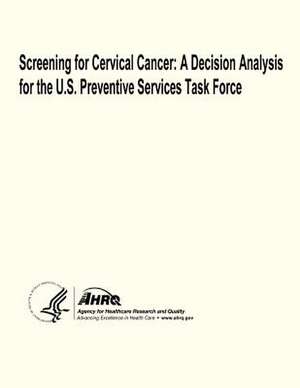Screening for Cervical Cancer
Autor U. S. Department of Heal Human Services, Agency for Healthcare Resea And Qualityen Limba Engleză Paperback
| Toate formatele și edițiile | Preț | Express |
|---|---|---|
| Paperback (3) | 115.61 lei 3-5 săpt. | |
| CREATESPACE – | 115.61 lei 3-5 săpt. | |
| CREATESPACE – | 153.14 lei 3-5 săpt. | |
| CREATESPACE – | 168.79 lei 3-5 săpt. |
Preț: 115.61 lei
Preț vechi: 121.68 lei
-5% Nou
Puncte Express: 173
Preț estimativ în valută:
22.12€ • 23.10$ • 18.31£
22.12€ • 23.10$ • 18.31£
Carte disponibilă
Livrare economică 15-29 martie
Preluare comenzi: 021 569.72.76
Specificații
ISBN-13: 9781484151952
ISBN-10: 148415195X
Pagini: 76
Dimensiuni: 216 x 279 x 4 mm
Greutate: 0.2 kg
Editura: CREATESPACE
ISBN-10: 148415195X
Pagini: 76
Dimensiuni: 216 x 279 x 4 mm
Greutate: 0.2 kg
Editura: CREATESPACE
